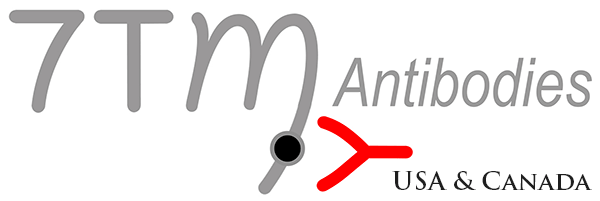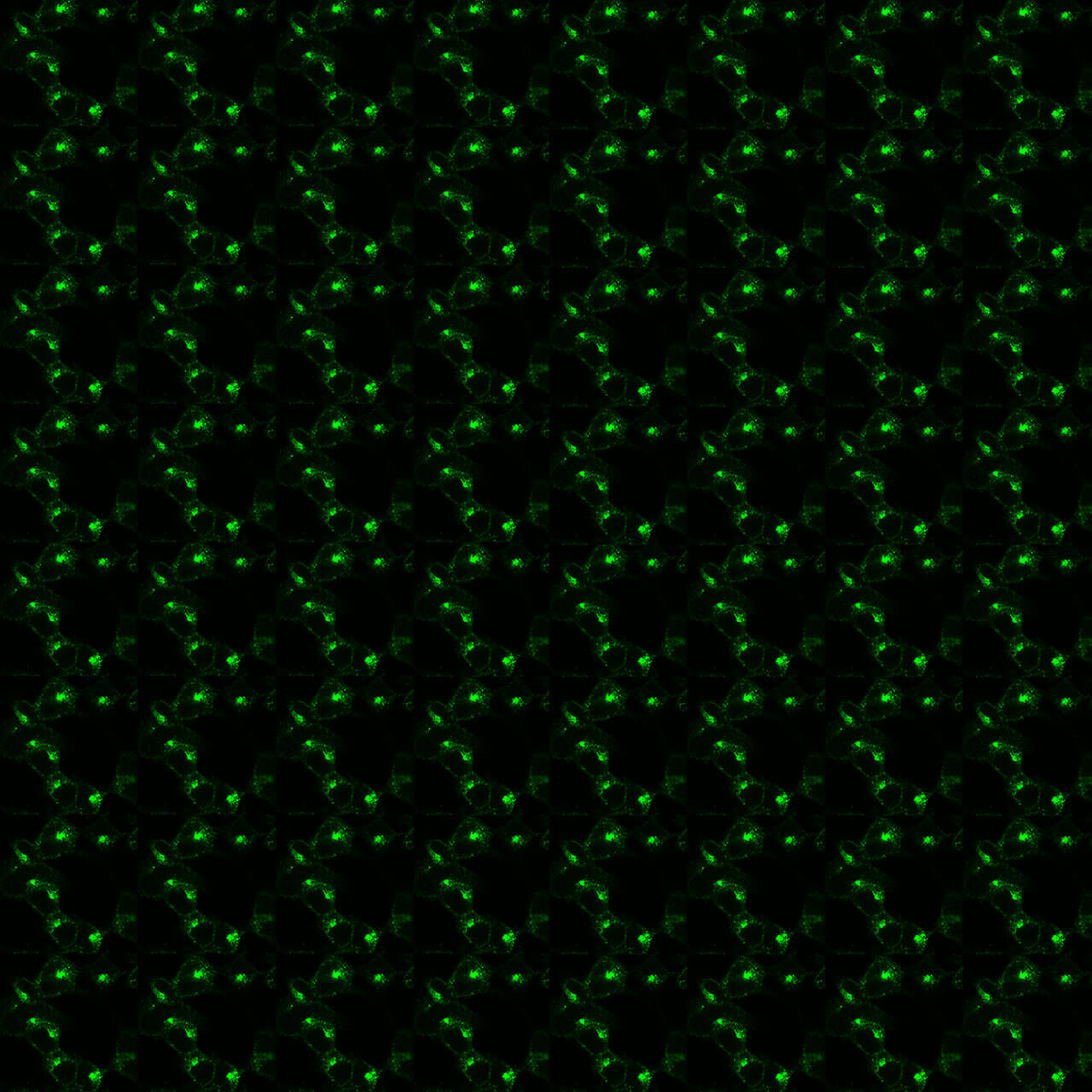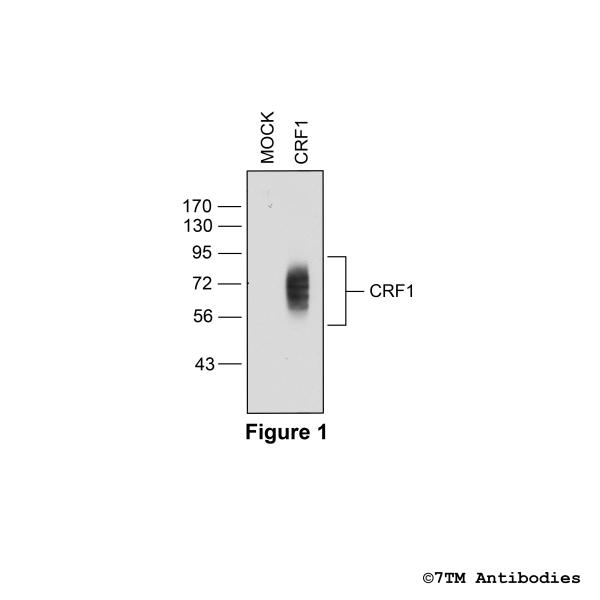Prices plus VAT plus shipping costs
Ready to ship today,
Delivery time appr. 5-8 days
- Order number: 7TM0212N
- Content: 100 µl
- Host: Rabbit
The non-phospho-CRF1 receptor antibody is directed against the distal part of the carboxyl-terminal tail of human CRF1. It can be used to detect total CRF1 receptors in Western blots independent of phosphorylation. The non-phospho-CRF1 antibody can also be used to isolate and enrich CRF1 receptors from cell and tissue lysates. It also detects CRF1 in cultured cells and tissue sections by immunohistochemistry.
| Alternative Names | CRFR1, CRHR, CRF-1alpha |
| IUPHAR Target ID | 212 |
| UniProt ID | P34998 |
| Western Blot (WB) | 1:1000 |
| Immunohistochemistry (IHC) | 1:100 |
| Species Reactivity | Human |
| Host / Isotype | Rabbit / IgG |
| Class | Polyclonal |
| Immunogen | A synthetic peptide presents the carboxyl-terminal tail of human CRF1. |
| Form | Liquid |
| Purification | Antigen affinity chromatography |
| Storage buffer | Dulbecco's PBS, pH 7.4, with 150 mM NaCl, 0.02% sodium azide |
| Storage conditions | short-term 4°C, long-term -20°C |
Figure 1. Validation of the Corticotropin-Releasing Factor Receptor 1 in transfected HEK293 cells. Native HEK293 cells (MOCK) or HEK293 cells stably expressing the Corticotropin-Releasing Factor Receptor 1 (CRF1) were lysed and immunoblotted with the phosphorylation-independent anti-CRF1 antibody (7TM0212N-IC) at a dilution of 1:1000.
Figure 2. Immunohistochemical identification of Corticotropin-Releasing Factor Receptor 1 in anterior pituitary. Sections were dewaxed, microwaved in citric acid, and incubated with anti-CRF1 (Corticotropin-Releasing Factor Receptor 1) antibody (7TM0212N-IC) at a dilution of 1:100. Sections were then sequentially treated with biotinylated anti-rabbit IgG and avidin-biotin solution.Color was developed by incubation in 3-amino-9-ethylcarbazole (AEC), and sections were counterstained with hematoxylin. Note, CRF1 receptors were detected at the plasma membrane of a subpopulation of anterior pituitary cells.
Figure 3. Immunocytochemical identification of Corticotropin-Releasing Factor Receptor 1 in HEK293 cells. HEK293 cells stably expressing the Corticotropin-Releasing Factor Receptor 1 (CRF1) were either not exposed or exposed to 100 nM CRF for 30 min and immunocytochemically stained with anti-CRF1 antibody (7TM0212N-IC) at a dilution of 1:200. Note, CRF1 receptors were confined to the plasma membrane in untreated cells (0 min).CRF1 receptors were seen in perinuclear clusters of vesicles after 30 min CRF exposure.













